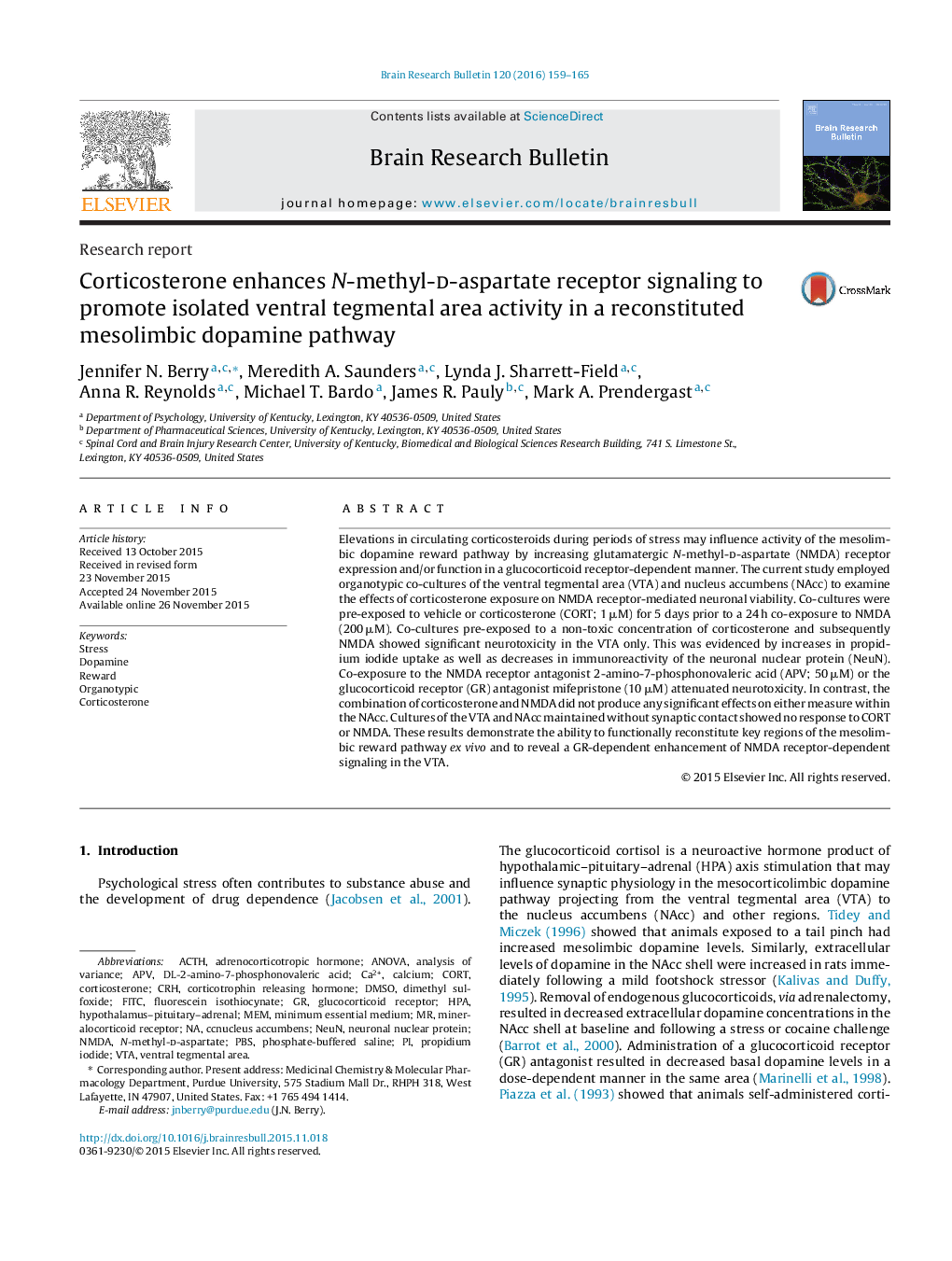| Article ID | Journal | Published Year | Pages | File Type |
|---|---|---|---|---|
| 6261659 | Brain Research Bulletin | 2016 | 7 Pages |
â¢Midbrain and striatal cultures functionally reintegrate synaptic contacts ex vivo.â¢Corticosterone causes glutamate receptor-dependent cell loss in midbrain neurons.â¢Ventral striatum is insensitive to effects of either corticosterone or an excitotoxin.
Elevations in circulating corticosteroids during periods of stress may influence activity of the mesolimbic dopamine reward pathway by increasing glutamatergic N-methyl-d-aspartate (NMDA) receptor expression and/or function in a glucocorticoid receptor-dependent manner. The current study employed organotypic co-cultures of the ventral tegmental area (VTA) and nucleus accumbens (NAcc) to examine the effects of corticosterone exposure on NMDA receptor-mediated neuronal viability. Co-cultures were pre-exposed to vehicle or corticosterone (CORT; 1 μM) for 5 days prior to a 24 h co-exposure to NMDA (200 μM). Co-cultures pre-exposed to a non-toxic concentration of corticosterone and subsequently NMDA showed significant neurotoxicity in the VTA only. This was evidenced by increases in propidium iodide uptake as well as decreases in immunoreactivity of the neuronal nuclear protein (NeuN). Co-exposure to the NMDA receptor antagonist 2-amino-7-phosphonovaleric acid (APV; 50 μM) or the glucocorticoid receptor (GR) antagonist mifepristone (10 μM) attenuated neurotoxicity. In contrast, the combination of corticosterone and NMDA did not produce any significant effects on either measure within the NAcc. Cultures of the VTA and NAcc maintained without synaptic contact showed no response to CORT or NMDA. These results demonstrate the ability to functionally reconstitute key regions of the mesolimbic reward pathway ex vivo and to reveal a GR-dependent enhancement of NMDA receptor-dependent signaling in the VTA.
